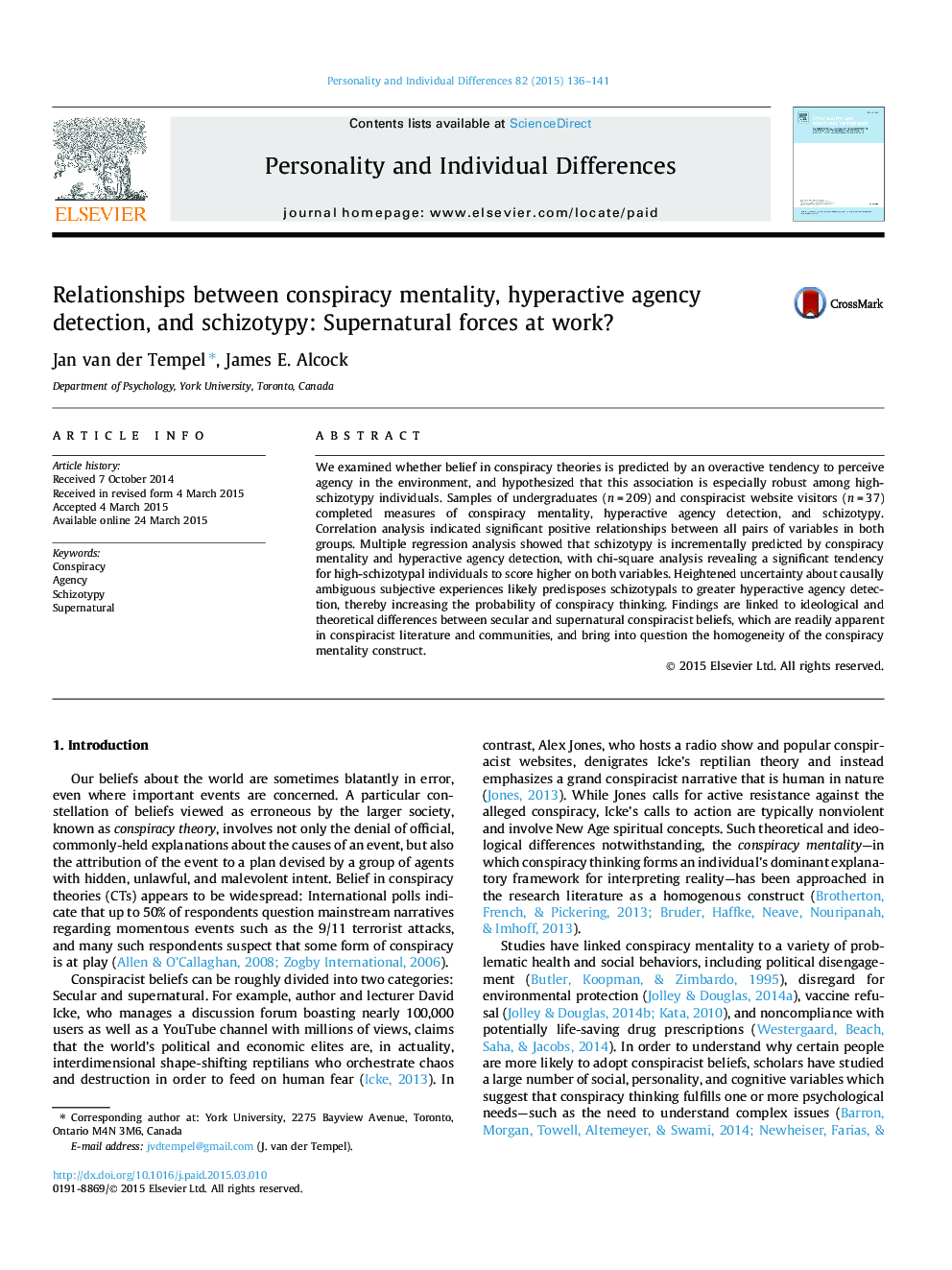| کد مقاله | کد نشریه | سال انتشار | مقاله انگلیسی | نسخه تمام متن |
|---|---|---|---|---|
| 890093 | 1472036 | 2015 | 6 صفحه PDF | دانلود رایگان |
• Hyperactive agency detection can predict conspiracy mentality.
• This association is stronger in schizotypal individuals.
• Causal ambiguity of schizotypal experiences may motivate conspiracy thinking.
• Secular and supernatural conspiracy mentalities may have distinct correlates.
We examined whether belief in conspiracy theories is predicted by an overactive tendency to perceive agency in the environment, and hypothesized that this association is especially robust among high-schizotypy individuals. Samples of undergraduates (n = 209) and conspiracist website visitors (n = 37) completed measures of conspiracy mentality, hyperactive agency detection, and schizotypy. Correlation analysis indicated significant positive relationships between all pairs of variables in both groups. Multiple regression analysis showed that schizotypy is incrementally predicted by conspiracy mentality and hyperactive agency detection, with chi-square analysis revealing a significant tendency for high-schizotypal individuals to score higher on both variables. Heightened uncertainty about causally ambiguous subjective experiences likely predisposes schizotypals to greater hyperactive agency detection, thereby increasing the probability of conspiracy thinking. Findings are linked to ideological and theoretical differences between secular and supernatural conspiracist beliefs, which are readily apparent in conspiracist literature and communities, and bring into question the homogeneity of the conspiracy mentality construct.
Journal: Personality and Individual Differences - Volume 82, August 2015, Pages 136–141
